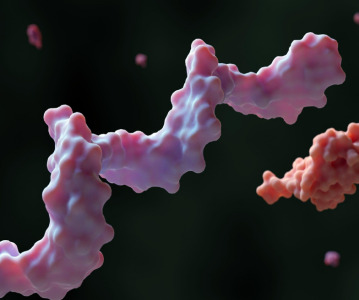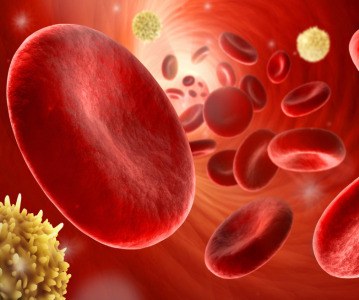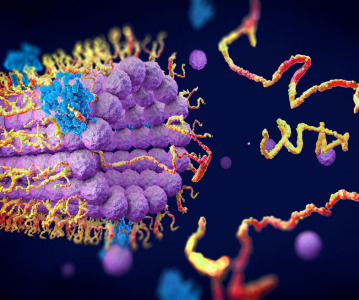NIH Researchers Identify Candidate Drug to Treat Batten Disease

Researchers at the National Institutes of Health have identified a potential new drug that could help in the treatment of a form of Batten disease, a fatal childhood disorder. The researchers tested the drug in mice with the disease and found that it slowed the loss of co-ordination seen in the disorder, and extended the animals’ life span.
The drug is derived from hydroxylamine, a molecule chemically similar to ammonia. Hyroxylamine is toxic, but a slight change in the molecule’s chemical structure results in a non-toxic molecule, called NtBuHA, short for N-(tert-Butyl-Hydroxylamine).
The term Batten disease refers to a group of disorders resulting in deterioration of the nervous system. These disorders occur in 1 of every 12,500 births, according to the study authors.
“The NIH researchers have found a promising lead for treating a devastating disease that has defied all attempts to treat it,” said Constantine A. Stratakis, MD, director of the Division of Intramural Research at the NIH’s Eunice Kennedy Shriver National Institute of Child Health and Human Development.
The researchers hope NtBuHA will be useful for treating a particular subtype of the disease, infantile Batten disease. With infantile Batten disease, children appear normal at birth, but experience a gradual, but steady, loss of brain tissue. By 11–18 months, they experience difficulty with physical coordination and begin to lose their vision. By age 4, they go blind and have no apparent brain activity. They may live in a vegetative state for several more years before dying.
Children with infantile Batten disease have a genetic deficiency of an enzyme, PPT1 (palmitoyl-protein thioesterase-1). Ordinarily PPT1 breaks down ceroid, a waxy substance. Without PPT1, ceroid builds up in brain cells, and results in infantile Batten disease. The researchers knew that the compound hydroxylaminemimics the function of the PPT1 enzyme. However, the compound is also toxic. After testing a panel of chemically modified hydroxylamines, they found that NtBuHA could mimic PPT1 in cultured cells from infantile Batten patients, preventing the waxy buildup, but without hyroxylamine’s toxic effects.
Next, the researchers tested NtBuHA on a strain of mice genetically modified to lack the PPT1 enzyme. They added NtBuHA to the animals’drinking water and found that it reached the animals’ brains, where it broke down and depleted the waxy deposits. Although NtBuHA did not prevent all of the damage that typically occurs in the mouse form of the disease, the waxy buildup was greatly reduced in the treated mice as compared to the untreated mice. The researchers found that NtBuHA protected the neurons in the animals’ brains, slowed the deterioration in motor co-ordination and extended the animals’ life span.
“We hope to test NtBuHA as a possible therapy for infantile Batten disease,” said senior author Anil B. Mukherjee, M.D., Ph.D., head of the Section on Developmental Genetics at the NICHD. The researchers are currently working to gain the approval required for testing such new drugs in clinical trials with patients.
Related News
-
News Google-backed start-up raises US$600 million to support AI drug discovery and design
London-based Isomorphic Labs, an AI-driven drug design and development start-up backed by Google’s AI research lab DeepMind, has raised US$600 million in its first external funding round by Thrive Capital. The funding will provide further power t... -
News AstraZeneca to invest US$2.5 billion in Beijing R&D centre
Amid investigations of former AstraZeneca China head Leon Wang in 2024, AstraZeneca have outlined plans to establish its sixth global strategic R&D centre in China. Their aim is to further advance life sciences in China with major research and manufact... -
News Experimental drug for managing aortic valve stenosis shows promise
The new small molecule drug ataciguat is garnering attention for its potential to manage aortic valve stenosis, which may prevent the need for surgery and significantly improve patient experience. -
News How GLP-1 agonists are reshaping drug delivery innovations
GLP-1 agonist drug products like Ozempic, Wegovy, and Mounjaro have taken the healthcare industry by storm in recent years. Originally conceived as treatment for Type 2 diabetes, the weight-loss effects of these products have taken on unprecedented int... -
News A Day in the Life of a Start-Up Founder and CEO
At CPHI we work to support Start-Up companies in the pharmaceutical industry and recognise the expertise and innovative angles they bring to the field. Through our Start-Up Programme we have gotten to know some of these leaders, and in this Day in the ... -
News Biopharmaceutical manufacturing boost part of new UK government budget
In their national budget announced by the UK Labour Party, biopharmaceutical production and manufacturing are set to receive a significant boost in capital grants through the Life Sciences Innovative Manufacturing Fund (LSIMF). -
News CPHI Podcast Series: The power of proteins in antibody drug development
In the latest episode of the CPHI Podcast Series, Lucy Chard is joined by Thomas Cornell from Abzena to discuss protein engineering for drug design and development. -
News Amgen sues Samsung biologics unit over biosimilar for bone disease
Samsung Bioepis, the biologics unit of Samsung, has been issued a lawsuit brought forth by Amgen over proposed biosimilars of Amgen’s bone drugs Prolia and Xgeva.
Recently Visited
Position your company at the heart of the global Pharma industry with a CPHI Online membership
-
Your products and solutions visible to thousands of visitors within the largest Pharma marketplace
-
Generate high-quality, engaged leads for your business, all year round
-
Promote your business as the industry’s thought-leader by hosting your reports, brochures and videos within your profile
-
Your company’s profile boosted at all participating CPHI events
-
An easy-to-use platform with a detailed dashboard showing your leads and performance







.png)